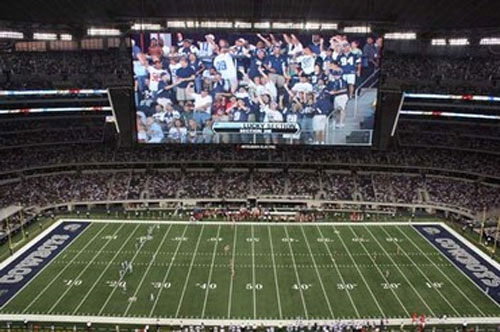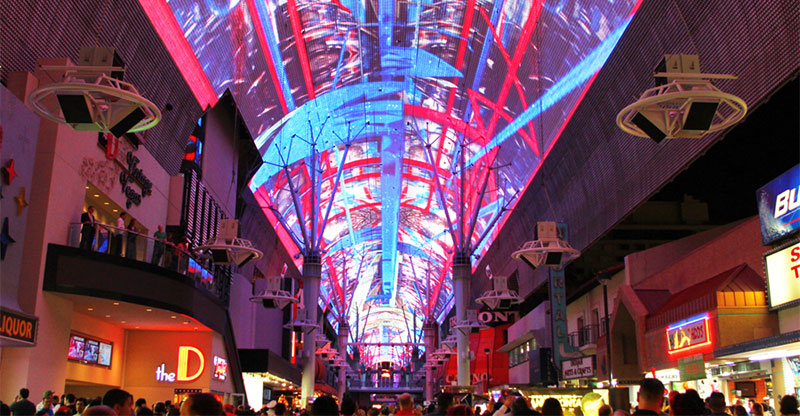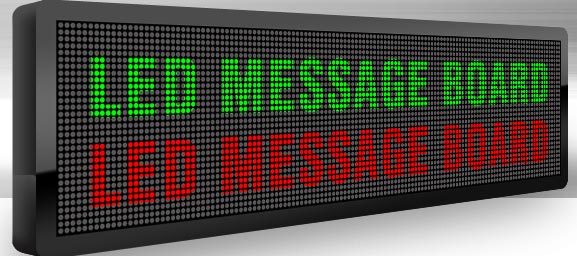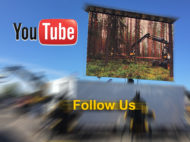LED Lessons: What is an LED Display?
- Jumbotron
- Published on Thursday, 03 September 2020 09:15
- Fire Up Video
- 0 Comments
LED Video Wall Displays Defined
 We have been working directly with LED screens for over ten years at Fire Up Video. So we decided to start a blog series dedicated to sharing our knowledge of LED and related technology to help clients better understand, as well to help the general public better understand more about the LED screen industry. Some of the topics we will cover include SMD vs. DIP tiles, IP ratings, the moiré pattern, brightness, viewing distance, types of screens, pixel pitch, resolution, and much more.
We have been working directly with LED screens for over ten years at Fire Up Video. So we decided to start a blog series dedicated to sharing our knowledge of LED and related technology to help clients better understand, as well to help the general public better understand more about the LED screen industry. Some of the topics we will cover include SMD vs. DIP tiles, IP ratings, the moiré pattern, brightness, viewing distance, types of screens, pixel pitch, resolution, and much more.
In the first installment of our informational “LED Lessons” series, we start with the basics and simply define what an LED display is. These displays are used to show visual images as well as simple lighting or illumination. They are found in many everyday items such as street signs, messaging boards, traffic lights, remote controls, store fronts, and much more. On a larger scale, and more similar to our jumbotron screens, they can be found being used for billboards along the highway, large screens in stadiums, at concerts, all throughout the strip in Las Vegas, and more. These video boards can be used both indoors and outdoors, depending on the style of LED technology that it is built with.
 An LED display is built up of individual LEDs (or Light-Emitting Diodes) to create a video display. These LEDs use clusters of red, green, and blue to create minuscule pixels, but many of them together make up a full image. They are typically built onto an LED tile or panel with computer chips or circuit boards, consisting of thousands of individual LEDs, or pixels. The tiles are then put together and programmed to create a larger, cohesive image.
An LED display is built up of individual LEDs (or Light-Emitting Diodes) to create a video display. These LEDs use clusters of red, green, and blue to create minuscule pixels, but many of them together make up a full image. They are typically built onto an LED tile or panel with computer chips or circuit boards, consisting of thousands of individual LEDs, or pixels. The tiles are then put together and programmed to create a larger, cohesive image.
There are two basic types of LED displays; SMD and DIP. We will go over the two in greater detail in another lesson, but put very simply, DIP LEDs are built of individual red, green, and blue bulbs that work together to create one pixel. SMD LEDs also use the red, green, and blue clusters, but in this case they are all soldered together in a single bulb to create a single pixel mounted to the tile. Although they can look similar from a normal viewing distance, there are differences between the two we will discuss later.
 With the LED tiles, we can built video walls of any size and shape, and use that to display video on the panels. With some programming, we can create a seamless image that can display just about anything you could want. There are all kinds of LED panels out there to create unique shapes, sizes, and configurations, so we can get creative with the kind of display that is made. LED displays do not need to be flat, rectangular images. The possibilities are nearly endless, which is one of the advantages of LED signage. The LEDs provide a bright, clear picture, even in direct sunlight, that you can’t get with other video projection or TV monitors. We will also go over more of this in a later LED Lesson. Please stay tuned for more informational blog articles in all LED-related topics. Please let us know if you have any questions, or have an idea for a future lesson you would like covered!
With the LED tiles, we can built video walls of any size and shape, and use that to display video on the panels. With some programming, we can create a seamless image that can display just about anything you could want. There are all kinds of LED panels out there to create unique shapes, sizes, and configurations, so we can get creative with the kind of display that is made. LED displays do not need to be flat, rectangular images. The possibilities are nearly endless, which is one of the advantages of LED signage. The LEDs provide a bright, clear picture, even in direct sunlight, that you can’t get with other video projection or TV monitors. We will also go over more of this in a later LED Lesson. Please stay tuned for more informational blog articles in all LED-related topics. Please let us know if you have any questions, or have an idea for a future lesson you would like covered!
About Fire Up Video
 Fire Up Video provides LED video walls for events all over the Midwest and beyond, focusing on states such as Minnesota, Iowa, Wisconsin, Illinois, Michigan, Kentucky, Indiana, Ohio, Tennessee, Missouri, North Dakota, South Dakota, Colorado, Nebraska, Oklahoma, and more. For more information, or if you still have any questions, please contact us at 612-759-1012 or baum3@earthlink.net. We also operate Fire Up Creative, a modular LED screen rental company that builds custom LED boards for events.
Fire Up Video provides LED video walls for events all over the Midwest and beyond, focusing on states such as Minnesota, Iowa, Wisconsin, Illinois, Michigan, Kentucky, Indiana, Ohio, Tennessee, Missouri, North Dakota, South Dakota, Colorado, Nebraska, Oklahoma, and more. For more information, or if you still have any questions, please contact us at 612-759-1012 or baum3@earthlink.net. We also operate Fire Up Creative, a modular LED screen rental company that builds custom LED boards for events.





 Dave was born in 1960 and grew up in a suburb of the Twin Cities. His first venture into large...
Dave was born in 1960 and grew up in a suburb of the Twin Cities. His first venture into large... 
Leave a Reply